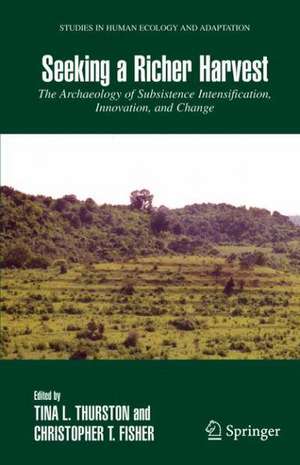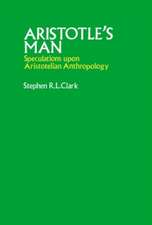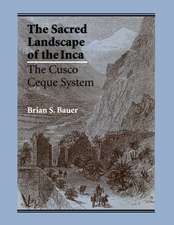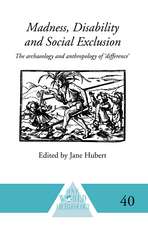Seeking a Richer Harvest: The Archaeology of Subsistence Intensification, Innovation, and Change: Studies in Human Ecology and Adaptation, cartea 3
Editat de Tina Thurston, Christopher T Fisheren Limba Engleză Paperback – 8 sep 2011
| Toate formatele și edițiile | Preț | Express |
|---|---|---|
| Paperback (1) | 889.43 lei 6-8 săpt. | |
| Springer Us – 8 sep 2011 | 889.43 lei 6-8 săpt. | |
| Hardback (1) | 646.11 lei 6-8 săpt. | |
| Springer Us – 13 dec 2006 | 646.11 lei 6-8 săpt. |
Preț: 889.43 lei
Preț vechi: 1084.67 lei
-18% Nou
Puncte Express: 1334
Preț estimativ în valută:
170.22€ • 177.05$ • 140.52£
170.22€ • 177.05$ • 140.52£
Carte tipărită la comandă
Livrare economică 15-29 aprilie
Preluare comenzi: 021 569.72.76
Specificații
ISBN-13: 9781441941022
ISBN-10: 1441941029
Pagini: 284
Ilustrații: X, 274 p.
Dimensiuni: 155 x 235 x 15 mm
Greutate: 0.4 kg
Ediția:2007
Editura: Springer Us
Colecția Springer
Seria Studies in Human Ecology and Adaptation
Locul publicării:New York, NY, United States
ISBN-10: 1441941029
Pagini: 284
Ilustrații: X, 274 p.
Dimensiuni: 155 x 235 x 15 mm
Greutate: 0.4 kg
Ediția:2007
Editura: Springer Us
Colecția Springer
Seria Studies in Human Ecology and Adaptation
Locul publicării:New York, NY, United States
Public țintă
ResearchCuprins
Seeking a Richer Harvest.- Classic Period Agricultural Intensification and Domestic Life at el Palmillo, Valley of Oaxaca, Mexico.- The Wet or the Dry?.- Agricultural Intensification in the Lake Pátzcuaro Basin.- Chinampa Cultivation in the Basin of Mexico.- Agricultural Intensification in the Titicaca Basin.- Animal Intensification at Neolithic Gritille.- Infields, Outfields, and Broken Lands.- Cod Fish, Walrus, and Chieftains.- Intensification and Protohistoric Agropastoral Systems in East Africa.- Rethinking Intensification.- Intensification, Innovation, and Change.
Textul de pe ultima copertă
Subsistence intensification, innovation and change have long figured prominently in explanations for the development of social complexity among foragers and horticulturalists, and the rise of chiefly societies and archaic states, yet there is considerable debate over the actual mechanisms that promote these processes. Traditional approaches to the "intensification question" emphasize population pressure, climate change, bureaucratic management, or even land degradation as prerequisites for the onset of new or changing strategies, or the construction and maintenance of agricultural landscapes. Most often these factors are modeled as external forces outside the realm of human decision-making, but recent archaeological research presents an alternative to this suggesting that subsistence intensification is the result of human driven strategies for power, prestige and status stemming from internal conditions within a group. When responding to environmental adversity, human groups were less frequently the victims, as they have been repeatedly portrayed. Instead human groups were often vigorous actors, responding with resilience, ingenuity, and planning, to flourish or survive within dynamic and sometimes unpredictable social and natural milieux.
Caracteristici
Assembled a set of global case studies that re-examine the ‘subsistence question’ in light of recent research Contrasts traditional approaches, which emphasize population pressure and climate change, with the more recent archaeological research that presents human driven strategies for power, prestige, and status as causes of subsistence intensification Includes supplementary material: sn.pub/extras























